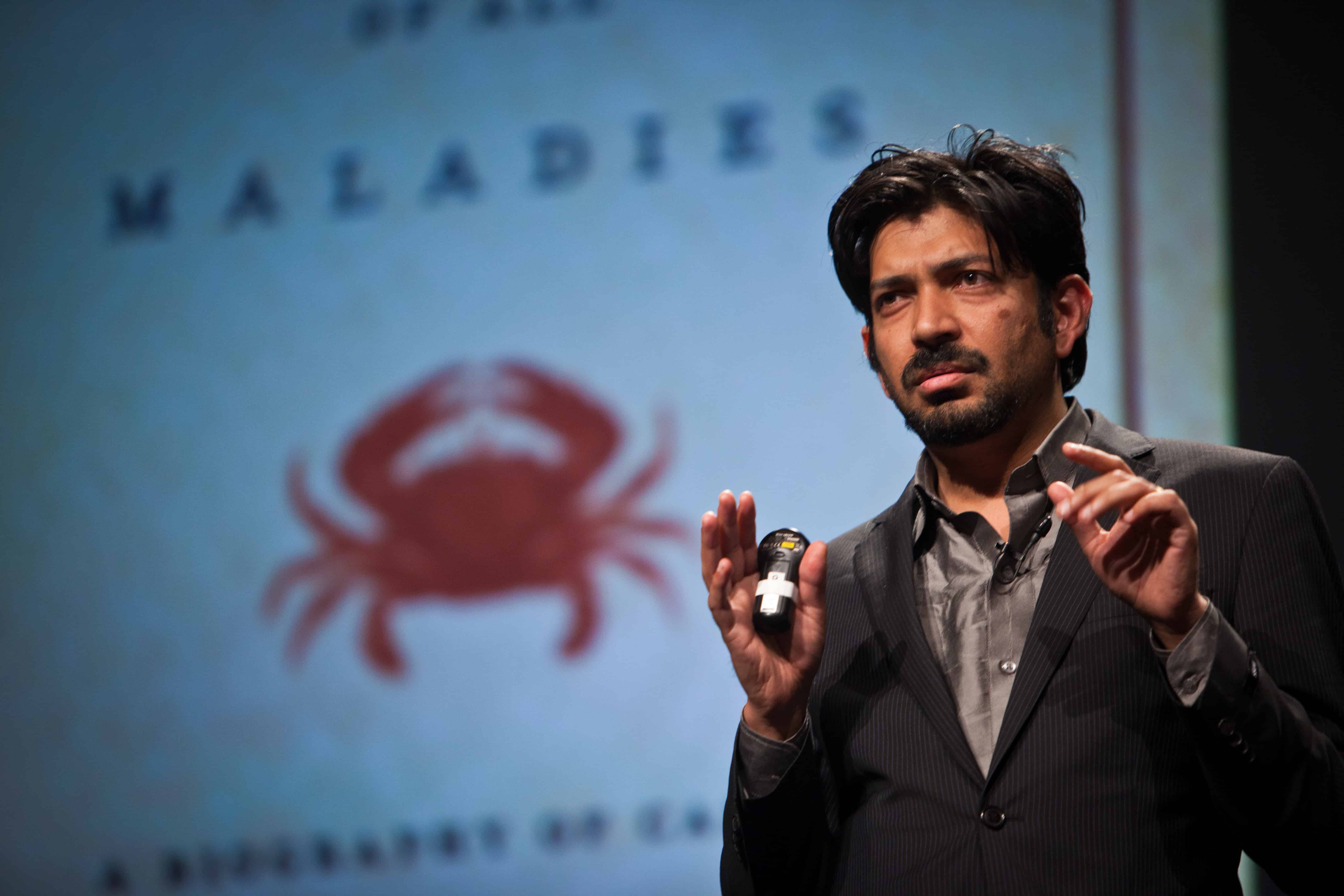Imagine waging a war in which you were required to craft uniquely tailored weapons to attack each individual soldier of the opposition. According to Dr. Siddhartha Mukherjee, the 2011 Pulitzer Prize-winning author of The Emperor of All Maladies and Assistant Professor of Medicine at Columbia University, this scenario parallels the efforts currently being undertaken by researchers to combat cancer using precision medicine.
Sponsored by the Krembil Foundation, Mukherjee spoke at the Toronto Reference Library on October 17 as part of Toronto Public Library’s The Cutting Edge series, a combination of programs and curated collections that explore ideas at the intersection of healthcare and technology. In his talk, Mukherjee used the historical development of cancer treatment as a lens through which to examine the emergence and onward trajectory of precision medicine.
In contrast to blanket medical treatments that are intended to apply to all patients, precision medicine involves the designing of treatments that consider factors specific to each individual, catering to their unique environment, lifestyle, and even genes.
The lecture outlined the progression of cancer treatment from ancient practices to modern technologies. In ancient Greece, the physician Galen theorized that cancer resulted from an imbalance of the four carnal fluids; specifically, he believed it resulted from an excess of black bile in the body. As a result, cancer therapies at the time consisted of surgically removing the tumour and subsequently the blood of the patient in an attempt to restore homeostasis within the body.
Jumping forward to the nineteenth century, Rudolf Virchow rejected Galen’s theory and proposed instead that cancer had a cellular basis. Virchow argued that cells emerged from other cells, which led to the radical implication that cancer cells must arise from normal cells.
Following on the heels of Virchow’s insight, William Halsted popularized a form of breast cancer treatment called radical mastectomy. Halsted operated under the theory that surgical treatments for breast cancer were not effective in the past because they were too moderate.
The term radical, in this instance, must be understood with respect to its Latin stem ‘radix’, which means ‘root.’ Halsted’s surgeries — which consisted of entirely removing the breast and much of its surrounding tissue and muscles — intended to pull the cancer out by its very roots. However, this approach was informed by a primitive understanding of the nature of cancer; it was largely ineffective because it failed to recognize that removal of the breast is futile in cases where the cancer has already metastasized into other parts of the body.
Chemical therapies also emerged to treat cancer, in which chemical poisons, including mustard gas, were used to kill cancer cells. Cancer cells quickly became resistant to single poisons, so treatments were instead devised to involve the administration of chemical cocktails to cancer patients. Using this approach, physicians were sometimes able to produce temporary remissions. It was particularly successful in treating childhood leukemia, reducing the mortality rate from nearly 100 per cent to approximately 30 per cent.
These historical approaches are intrinsically similar in that they are all fundamentally impersonal and take a one-size-fits-all approach to cancer therapy. However, no two cancer patients are alike and, as Mukherjee puts it, “every cancer is its own cancer.” Therefore, game-changing advancements in cancer treatment can only be made by understanding that an individual’s cancer ‘fingerprint’ — the genetic makeup of their particular type of cancer — is distinct from that of any other individual’s. In other words, our war against cancer has been at a stalemate for thousands of years because we’ve been fighting without our greatest weapon — precision medicine.
Thanks to whole genome and exome sequencing, the genetic blueprint of a patient’s cancer profile gives doctors information about aberrant genes leading to the manifestation of the disease. Rather than simply targeting individual genes in isolation, Mukherjee sees the future of cancer therapy involving targeted treatment of a whole network of genes.
Cancer treatment is now in a rapidly advancing and innovative phase, with clinicians and researchers making great efforts to understand the unique physiology of cancer, which will hopefully enable us to deliver targeted therapies that spare the rest of the body from injury. It is beyond a doubt that cancer is a disease like no other, challenging each generation of scientists to push the boundaries of knowledge and devise novel strategies to combat this emperor of all maladies.


